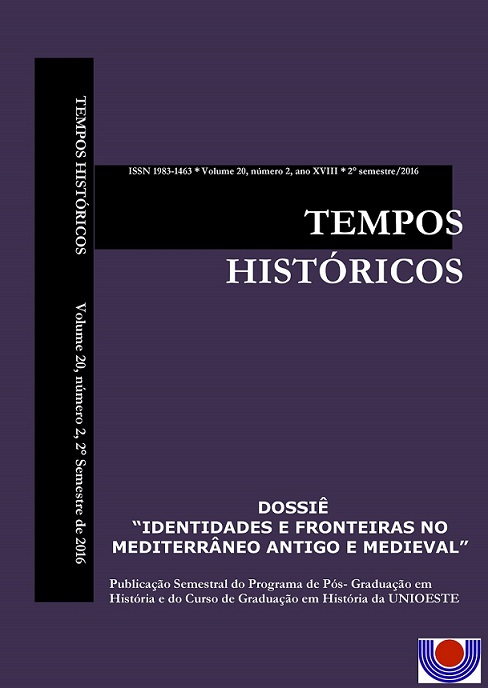From Eostre to Easter: a pagan cult resignification in Medieval England?
DOI:
https://doi.org/10.36449/rth.v20i2.14277Abstract
At the beginning of the eighth century, in De Tempora Ratione, the monk Bede, the Venerable, presented a report that linked the month of April from the old English calendar with Eostre, a probable goddess of spring, whose worship would have been resignified by the Christian Easter. Due to the lack of other evidence attesting that worship, Beda was sometimes accused to have created this relationship, which was just an etymological fantasy around a pagan influence in one of the biggest celebrations of the liturgical calendar of the medieval Church. But what elements could be considered in the study of this assertion from Beda? With the help of linguistic studies, the etymological relationship with the plates of Matronae Autriahenae and the letter from Pope Gregory I to Augustine's mission in southern Britain in 600 AD, the goal of the present work is to investigate the possible existence of a cult for Eostre and its resignification from the Christian Easter in England in the centuries VII and VIII.
Downloads
Published
How to Cite
Issue
Section
License
Aviso de Direito Autoral Creative Commons
Política para Periódicos de Acesso Livre
Autores que publicam nesta revista concordam com os seguintes termos:
1. Autores mantém os direitos autorais e concedem à revista o direito de primeira publicação, com o trabalho simultaneamente licenciado sob a Licença Creative Commons Attribution que permite o compartilhamento do trabalho com reconhecimento da autoria e publicação inicial nesta revista.2. Autores têm autorização para assumir contratos adicionais separadamente, para distribuição não-exclusiva da versão do trabalho publicada nesta revista (ex.: publicar em repositório institucional ou como capítulo de livro), com reconhecimento de autoria e publicação inicial nesta revista.
3. Autores têm permissão e são estimulados a publicar e distribuir seu trabalho online (ex.: em repositórios institucionais ou na sua página pessoal) a qualquer ponto antes ou durante o processo editorial, já que isso pode gerar alterações produtivas, bem como aumentar o impacto e a citação do trabalho publicado (Veja O Efeito do Acesso Livre).
Licença Creative Commons
Esta obra está licenciada com uma Licença Creative Commons Atribuição-NãoComercial-CompartilhaIgual 4.0 Internacional, o que permite compartilhar, copiar, distribuir, exibir, reproduzir, a totalidade ou partes desde que não tenha objetivo comercial e sejam citados os autores e a fonte.


